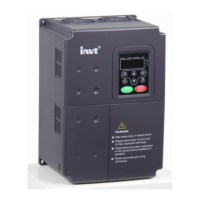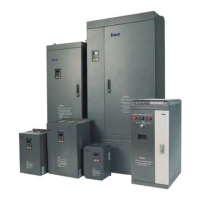Introduction
1
1. INTRODUCTION
1.1 Technology Features
● Input & Output
◆Input Voltage Range: 1140/690/380/220V±15%
◆Input Frequency Range: 47~63Hz
◆Output Voltage Range: 0~rated input voltage
◆Output Frequency Range: 0~400Hz
● I/O Features
◆ Programmable Digital Input: Provide 5 terminals which can accept ON-OFF inputs,
and 1 terminal which can accept high speed pulse input (HDI1). 4 inputs can be
extended by I/O extension card.
◆ Programmable Analog Input: AI1 can accept input of 0 ~10V, AI2 can accept input
of 0~10V or 0~20mA. AI3 (-10V~10V) and AI4 (0~10V or 0~20mA) can be
extended by I/O extension card.
◆ Programmable Open Collector Output: Provide 1 output terminal. 1 output (open
collector output or high speed pulse output) can be extended by I/O extension
card.
◆ Relay Output: Provide 2 output terminals. 1 output can be extended by I/O
extension card.
◆ Analog Output: Provide 1 output terminal, whose output scope can be 0/4~20 mA
or 0~10 V, as chosen. 1 AO (0/4~20mA or 0/2~10V) can be extended by I/O card.
● Main Control Function
◆ Control Mode:
Sensorless vector control (SVC), Vector control with PG (VC), V/F control.
◆ Overload Capacity: 60s with 150% of rated current, 10s with 180% of rated current.
◆ Starting Torque: 150% of rated torque at 0.5Hz (SVC);
180% of rated torque at 0Hz(VC).
◆ Speed Adjusting Range: 1:100 (SVC); 1:1000 (VC)
◆ Speed Accuracy: ± 0.5% of maximum speed (SVC); ± 0.02% of maximum speed
(VC)
◆ Carrier Frequency: 1.0kHz~16.0kHz.
◆ Frequency reference source: keypad, analog input, HDI, serial communication,
multi-step speed, simple PLC and PID. The combination of multi- modes and the
switch between different modes can be realized.
◆ Torque Control Function: Provide multiple torque setting source.
◆ PID Control Function
